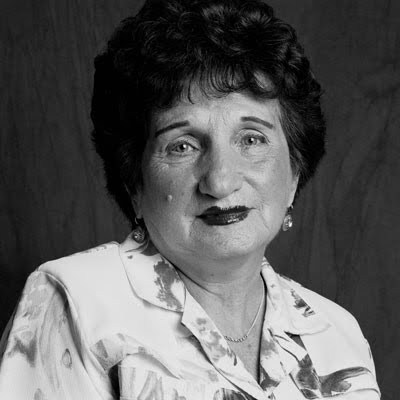“I was twelve when my sister cut my long pigtails and applied rouge to my lips. I instantly became eighteen when the Nazis asked my age. It saved my life,” says Paula Kelman.
When her parents and three of her siblings were sent to death camps, Paula remained in the Czestochowa ghetto with her sister and brother. She worked clearing out the homes of Jews who had been evacuated to camps and other ghettos and bringing everything to the Nazis. Desperately hungry, she recalls how she wrapped herself in the sheets and linens: “I was able to take bedding and sell it outside the ghetto to buy bread.” When she and another girl got caught, she remembers, “the policeman was Jewish and he shot a pistol in the air to pretend he had killed us, but at night he let us go.” Another memory is of standing in the snow barefoot to watch Nazi guards shoot twenty boys as punishment for an alleged assault on an SS soldier.
By 1942 Paula was making bullet casings at a HASAG munitions factory twelve hours a day. “If we didn’t meet the quota, we were taken to the back and beaten,” she recounts. “When we looked at each other in the shower some of our bodies looked like road maps from the scarring.”
At liberation, she says, “I remember seeing the Russians come in but nobody moved. We were so terrified that this wasn’t real. When we realized we were safe, we immediately went home to find family.” Their former neighbors turned on them, so Paula and her sister sought refuge at the Bergen-Belsen camp for displaced persons.

